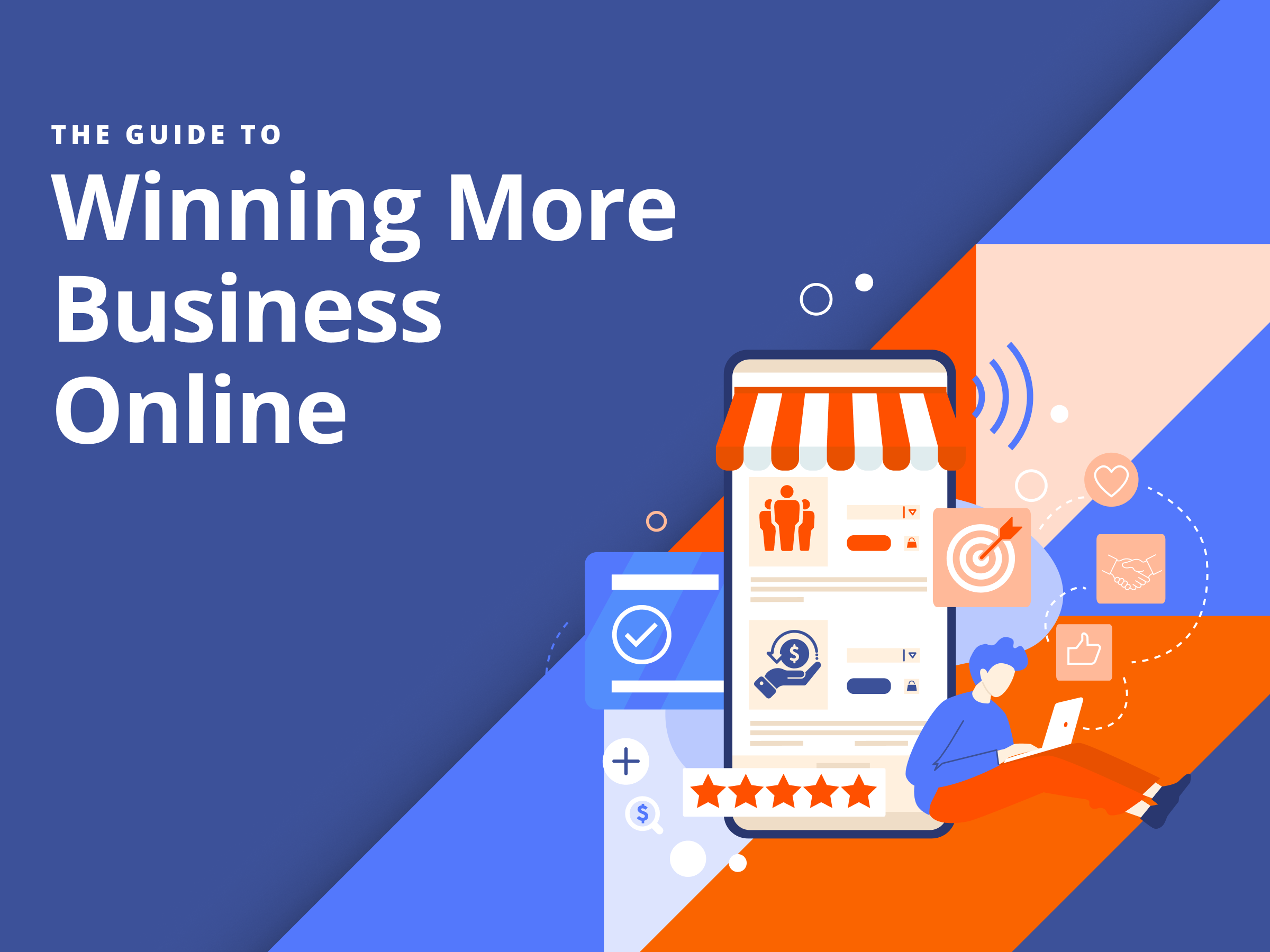Allotting money for advertising is a big step for a small business. When done right, advertising can attract new customers, make existing customers feel appreciated (and more loyal) and promote new products and services.
While you might need to spend money to make money, many creative, low-cost ways to advertise exist. Just make sure you understand these advertising basics.

The Guide to Winning More Business Online
DownloadDigital Advertising Basics
In the last decade, digital advertising has become the dominant advertising component in an always-on digital marketing strategy.
Online advertising offers a wide range of price points, endless options for reaching a target market and a growing array of metrics.
45% of small businesses paid for digital advertising in 2021.
~Statista
Options
Purchasing digital advertising can be overwhelming. It helps to know some of the common ad types.
- Banner — Also known as “display” advertising, these are the ads you see pop up like visual billboards on a website.
- PPC — Pay per click. PPC is used to advertise on search engines and social platforms. You’re charged only for the number of clicks on your ads. You can tell they’re ads by the word “Ad” on the content’s first line.
- Social — These are generally ads designed to look like social media posts on the platform where they appear, such as LinkedIn, Facebook, Twitter or TikTok.
- In-app — These ads appear inside the mobile and desktop apps you use, whether they be gaming, utility or entertainment applications. They include banner, video, “interstitial” (full-screen ads that appear during an app transition) or “native” (appear in the app’s regular content flow, often marked as “sponsored”).
Digital media will account for 64.4% of global ad spend in 2021, up from 60.5% in 2020 and 52.1% in 2019.
~Forbes
Metrics
Digital adverting is endlessly measurable, offering way more precision than traditional media. You may have heard some of these measurement terms …
- Click-through rate — The number of clicks on a link or “call to action.” Generally too broad to tell you whether the visitor found what they needed.
- Page views — Number of total visits to your webpage(s). But it doesn’t tell you who visited and what they did next.
- Unique visitors — More helpful in determining whether each visitor was a brand new one, or a repeat visitor.
- Bounce rate — How many people landed on your site and left immediately? Knowing how many visitors “bounce” off your page tells you there’s a disconnect between your ad messages and your website information.
- Engagement — Gauges interest in your content. Social media features several engagement metrics, including likes, shares (e.g., a retweet) or comments.
- Conversion rate — One of the more powerful digital metrics. Did your website visitor ask for a demo? Book an appointment? Call for information? If so, your digital advertising “converted” that visitor into a hot lead.
- MQLs or SQLs — Marketing- or sales-qualified leads. Not every visitor or conversion is really your audience. Qualifying leads helps you focus next steps on someone who may actually purchase.
- Paid or organic search performance — These tell you if website traffic came to your site through a purchased online ad (paid) or search engine results (organic).
But with every new marketing technology comes a new way to measure. Have you heard of keyword rankings (winning the search engine war for certain words)?
How about heat-mapping (following readers’ eyes on a web page)? Or maybe engaged visit rate (visitor quality coming from your advertising)?
Digital advertising will continue to adapt. That means your efforts must continue to evolve, too.

The Guide to Winning
More Business Online
We’ll show you how to land more customers with a better website and online presence in this free ebook.
Traditional Advertising Basics
Believe it or not, print and radio advertising are still viable channels.
Many small business owners start with print ads in local, community newsweeklies. But how do you get exposure in larger, daily newspapers or even glossy, monthly magazines? To buy space in more-widely distributed publications, try using an advertising dealer to buy remnant space.
Remnant space usually becomes available as the publication goes to print — the publisher may be desperate to fill an extra page or two, at a discount.
Or, if you sign a long-term contract, you may be able to get a few months’ worth of advertising for free.
Radio
Like publications, radio stations also may have remnant space available. But they may only make it available to regular advertisers.
Sometimes broadcasters will agree to bartering. You could offer some products or services — maybe excess inventory — in exchange for air time.
The radio stations may use the product or service as a listener giveaway or as in-house sales prizes.
Metrics
Traditional advertising’s main measurements are:
- Circulation — The number of copies a publication actually distributed. That number usually is audited to prove the circulation number isn’t inflated.
- Impressions — The number of times your ad or content has been displayed.
- Reach — The number of people who may have seen your content, or the number of “eyeballs” you’ve reached.
- Awareness — The measure of how memorable or recognizable a brand is to its target audience.
Spending Wisely Basics
Wherever you choose to advertise — online, print or radio — spend your ad dollars wisely. Purchase space where your target market is most likely to look.
Small businesses on average spend 1% of their revenue on advertising.
~Small Business Trends
Know Your Market
By knowing your target market — where they buy, which media they use, how often and when — will help you reduce advertising costs and improve returns on each dollar you spend.
If you’re trying to reach other businesses, for example, consider which industry publications and web sites they turn to most often.
Consider Efficiency
Also keep in mind the type of ad that could have the most impact. More may not be more. Instead of several small ads sprinkled across multiple publications and websites, a larger ad in one popular site or publication might give you more mileage.
But keep in mind advertising dollars shouldn’t be the first thing on the chopping block when finances are tight. Businesses that cut back on advertising tend to lose mindshare — and sales.
Instead, consider more creative solutions to carry you through leaner times.
Understanding these advertising basics will help you chart the best course for your advertising dollars. Your always-on digital media strategy will be the better for it.

The Guide to Winning
More Business Online
We’ll show you how to land more customers with a better website and online presence in this free ebook.



